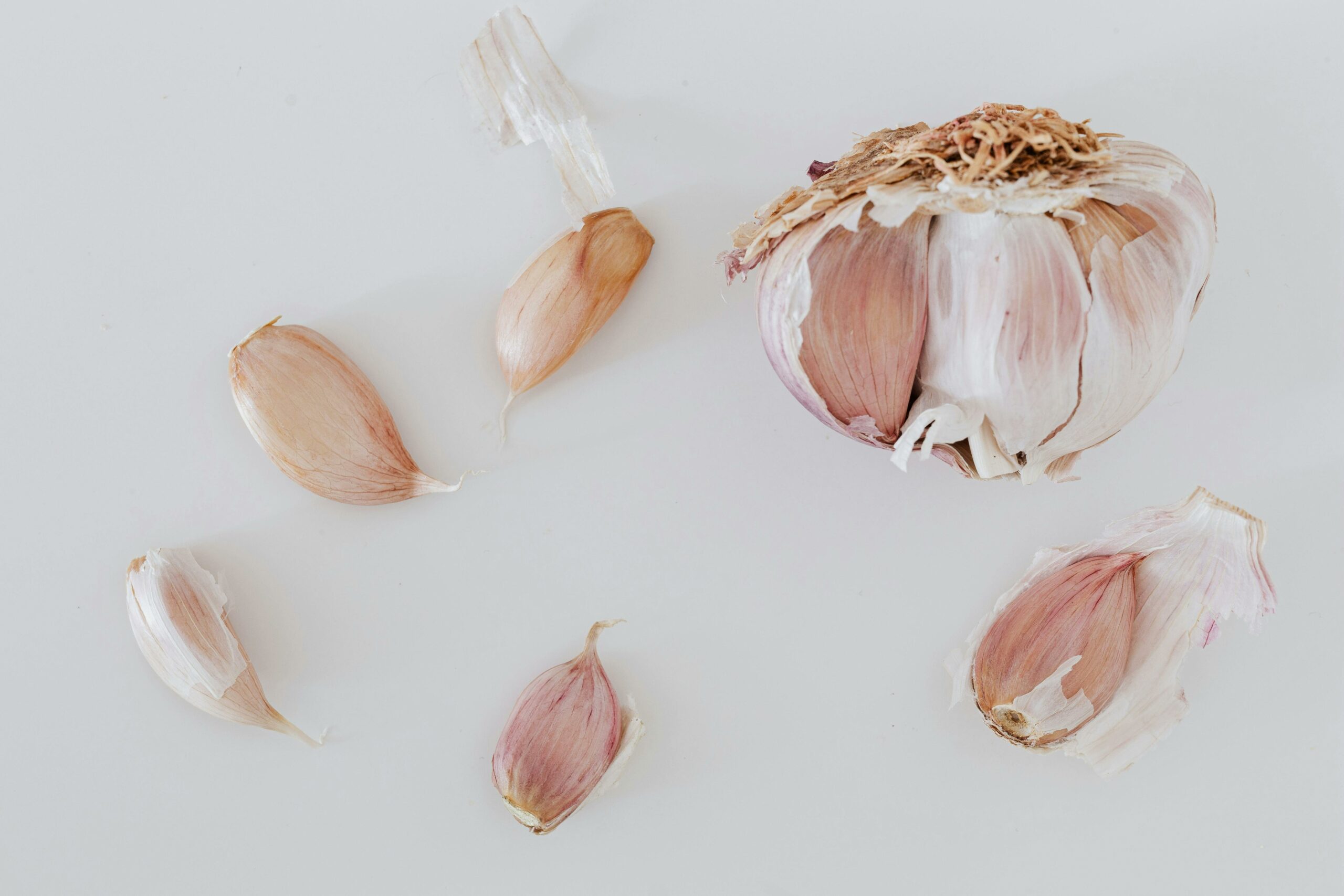SOIL
Garlic likes full sun and well-drained soil. Garlic is quite tolerant when it comes to soil types and textures, but it definitely appreciates sandy-clay-loam that is friable (easily crumbled in the hand) and has a high organic content. It does best when the pH is in the 6.2 to 6.8 range. The garden or field should drain easily – standing water just won’t cut it as the bulbs could rot in the ground. To increase the tilth of the soil, add organic matter such as well-composted manure. You can also green mulch, which is planting cover crops such as clover or buckwheat and then tilling them under.
PREPARATION
If you have a small plot, spade up the top 6 to 12 inches. Garlic roots like to go deep, so well-cultivated soil is a big help. Mix in the organic matter and manure at this phase. After the deep tilling, we find a final pass with a cultivator that powders up the upper several inches of the soil aids in planting.
PLANTING FAQs
When to plant? The best time to plant garlic is in the fall, about 4 to 6 weeks before the ground freezes. In the metro Denver area, aim to plant around mid-October. “Crack” the bulbs to separate the cloves, and plant them about 2 inches deep with the pointy end up. In dry climates, you can plant cloves directly into slightly dried soil. For wetter soils, make holes with a broom handle before planting.
When do you “crack” the bulbs? Since one obviously does not plant the bulb whole, you must crack (split) the wrapper and separate the individual cloves. It is best not to do this more than about 48 hours before actual planting, or they will begin to dry out and lose viability.
How deep to plant? We find the tips should be about 2 inches below the soil surface. For elephant (Buffalo) garlic, make that 3 to 4 inches. Be sure to plant with the pointy side up/basal plate (root) down.
How to plant? In dry climates we find it works best to let the upper few inches dry out and then bring in the cultivator. Then you can literally just stick the cloves in the ground by hand and the soil covers them up as you remove your fingers. If you have heavier and/or wetter soil, you can poke a hole in the ground with a broom handle and just drop the cloves in the hole, covering up the entire batch with a rake at the end. This works best if you water the soil several hours before planting so it is moist but not muddy.
How close do you plant them? Our experience is that closer is better. But the cloves should have enough room to grow into large bulbs (at least 4 to 6 inches for hardneck and 6-8 inches for elephants). The close planting helps with weed control once the plants get larger in spring as the leaves block out the sun to the later sprouting weeds. If you plant in rows, be sure to leave enough room (24-30 inches) in between so you can get in there to weed next spring. 24 inches wide by 21 inches long would fit approximately 20 cloves. They would be 6 inches apart going across and the rows will be 7 inches apart.
MULCHING
This is a key element to real garlic success. Mulch serves many purposes, not the least of which is to regulate the sharp changes in temperature and moisture that can occur during winter, especially out west. But it also goes a long way towards controlling weeds the next spring. Mulch can be straw or alfalfa. Lawn grass clippings are excellent. Chopped leaves will work if you have them. Wetting down your mulch helps compact it, making it less likely to take off. You should plan to put the mulch on immediately after planting (perhaps after giving the ground a really good watering). Don’t be shy on the mulch, at least several inches should cover your crop. You would be surprised how tough those shoots are when it comes to punching through the mulch. If you do mulch extra heavily, removing some of the overburden in spring might be a good idea, but leave enough for weed control.
IRRIGATION
Most of the time it really likes moist (not soggy) soil. Watering regularly in the fall during germination is essential. In dry climates, watering in winter is also important. Keep on watering into the spring when the maximum green shoots are forming. Then about mid- to late June, or when the scapes (on hardnecks) are standing high, STOP. During the last four weeks, when the bulbs are finishing off, and the wrappers are drying out, too much water is not good. You can create a mold or fungus problem.
HARVESTING
When to harvest? When the lower third to half of the leaves have turned brown, but there are still mostly green leaves higher on the plant, it’s time to harvest. You can always test dig one or two plants. On the High Plains, depending on the weather, harvest can begin as early as the first week of July. There is also a two to three week difference in the harvest dates of the several varieties. To get the bulb out of the ground, don’t just try to pull them. The stalk will break. You must dig, using a pitchfork or the like in order to loosen the soil. Then you can lift the entire plant out of the ground.
CURING & STORAGE
If you want to store your garlic, you have to cure it first. After the curing process they store up to six months. The entire plant, leaves and all, should be dried out for about two to three weeks. The drier your climate the faster the curing will go and the less chance you will have to deal with mold. The simplest is to tie up a bunch with string/wire and hang them in a well ventilated place. Do not wash your bulbs or let them be exposed to water. You can also pack them loosely into large mesh bags or in open sided crates. But they must get a lot of air circulation. After the curing is complete, lop off the tops about an inch above the bulb and trim the roots.
Storing garlic requires an even temperature (50-70°F seems to work) and a relative humidity averaging in the 50-60% range. Make sure they get plenty of air circulation. Most hardneck garlics and elephants can be kept for several months. The softneck varieties do tend to have a somewhat longer shelf life.



